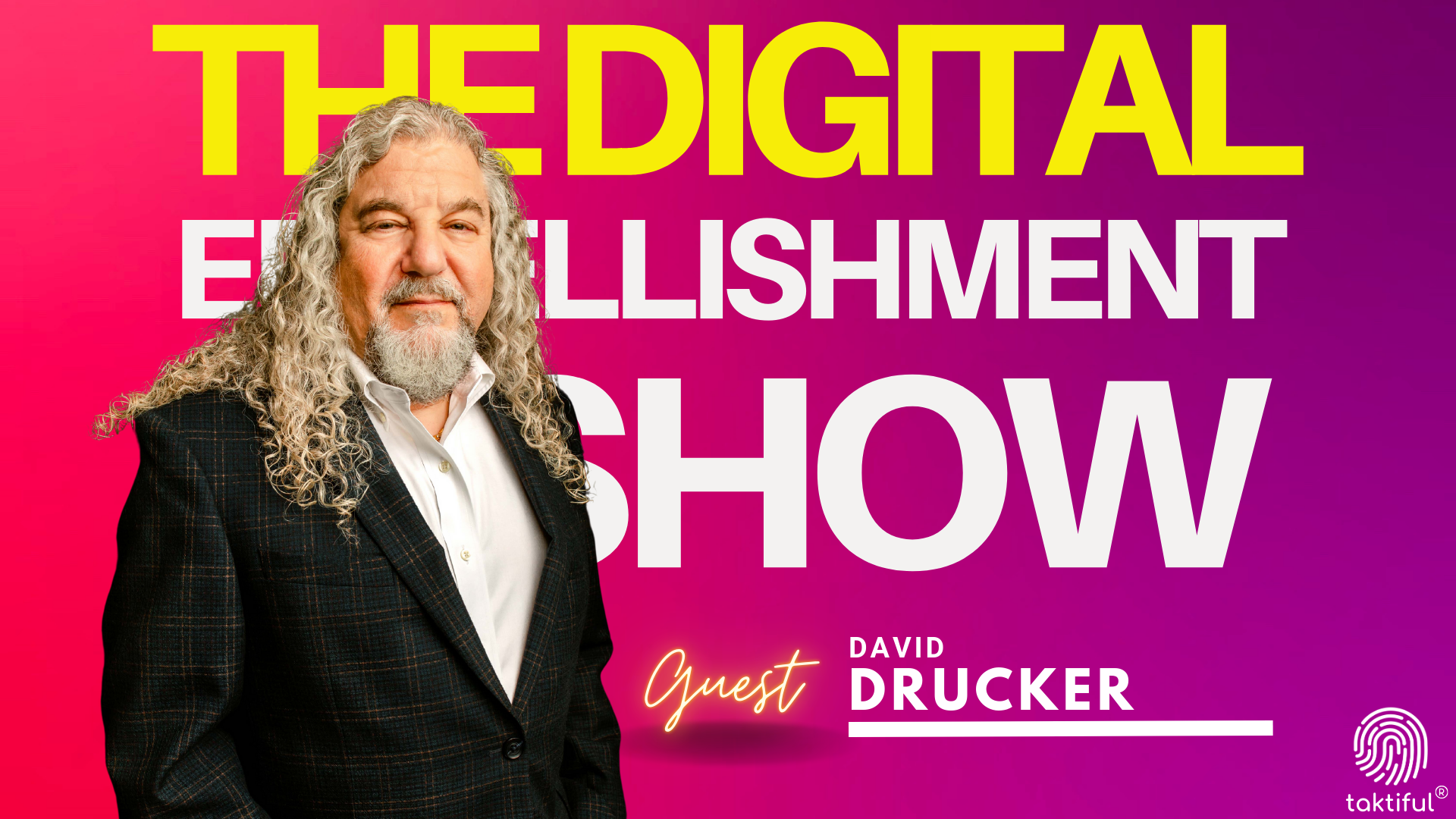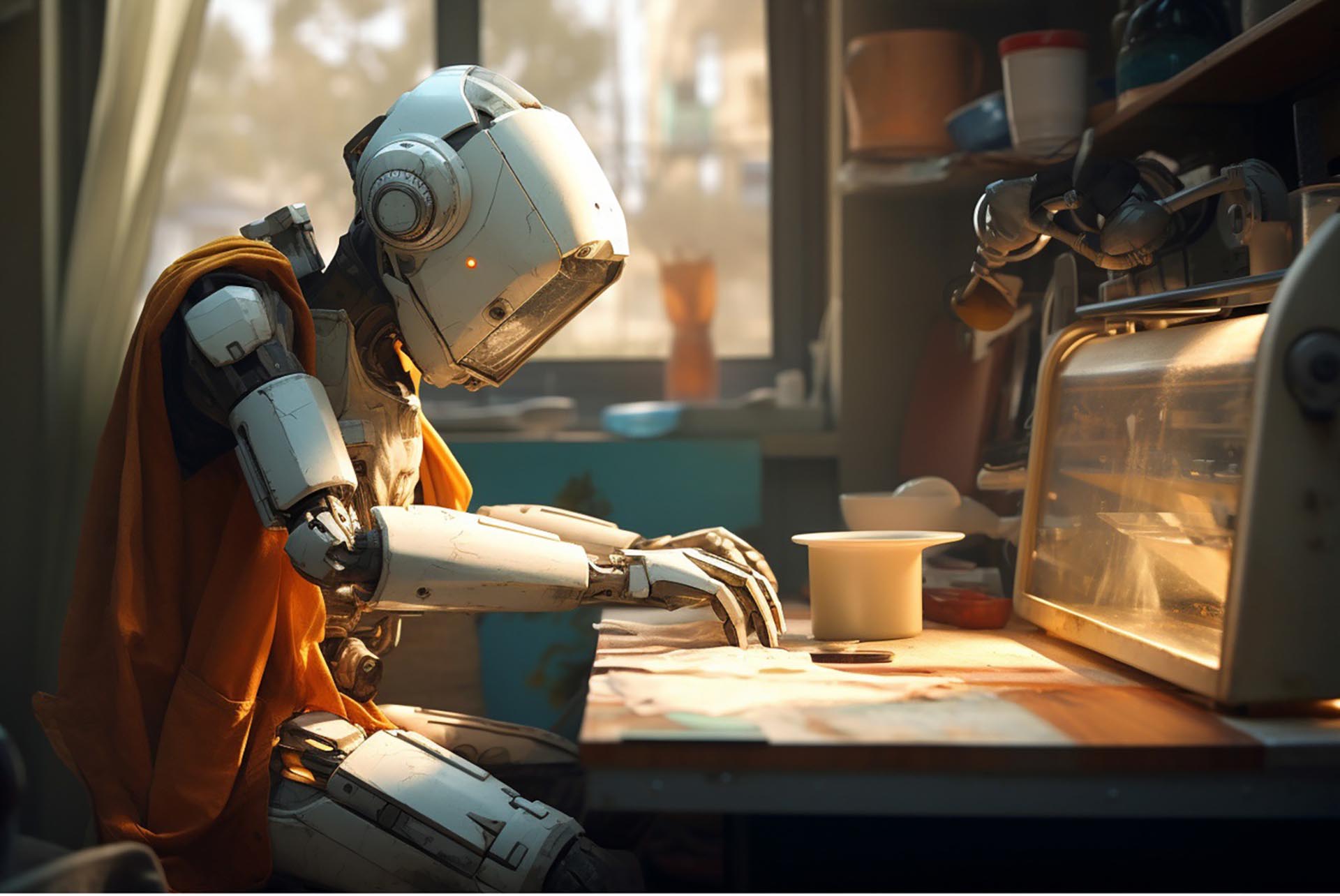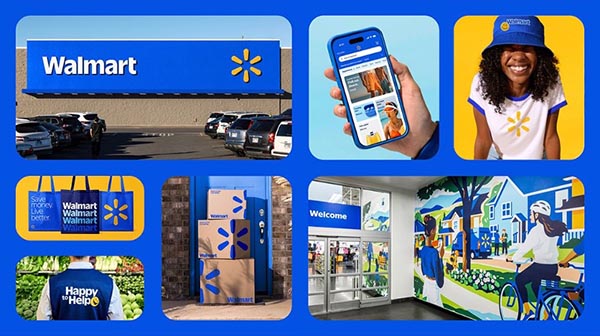This post continues the coverage of WTT’s August 24 webinar “Interactive Print: What’s Working in the Real World (2022),” which offered a wealth of information on the use of QR codes and augmented reality to solve real-world business problems and generate revenue. Moderated by Heidi Tolliver-Walker and featuring presenters Joanne Gore of Gore Communications (New Market, Ontario) and Joe Zeff of Joe Zeff Design, (Pittsburgh, PA), the webinar looked at the dramatic change in the marketing landscape in which QR codes have become normalized and augmented reality is being used successfully in a growing number of marketing applications.
After opening with a variety of statistics on the impact of AR on the brain specifically as it relates to shopping behavior, Tolliver-Walker noted the sea change in the use of augmented reality brought by WebAR, which allows people to access augmented reality scenes through their mobile browsers rather than requiring them to download an app. This has dramatically broadened the application of AR to anyone with a mobile phone. “AR has been around for a long time, but it was primarily app-based,” she said. “Today, if you can scan a QR code, you can access augmented reality. This makes AR is accessible to everyone. That changes everything.”
Tolliver-Walker then turned the webinar over to Gore, who took a deep dive on QR codes, then handed the reigns to Zeff, who offered up a detailed presentation on his use of augmented reality to serve the clients of his design business, including the Pittsburg Steelers, Advanced Construction Robotics, and Augmented Pittsburg.
Download the slides and all of the data points here.
From Proprietary Apps to WebAR
Joe Zeff has been developing augmented reality campaigns for clients for years. He started with proprietary app-driven programs, then has transitioned largely to WebAR platforms for their accessibility to the wider marketplace. Currently, he uses two WebAR platforms: RealityBLU’s WorldViewAR for holotwins, portals, and 3D objects and ZappAR for bringing posters to life.
Zeff cut his graphic journalism teeth working for The New York Times and Time Magazine. Because of his background, he doesn’t think about AR in terms of selling products or services. He thinks of it in terms of storytelling. “What I do is help companies tell better stories,” he said. “Now the way to tell stories that everybody wants to talk about is augmented reality.”
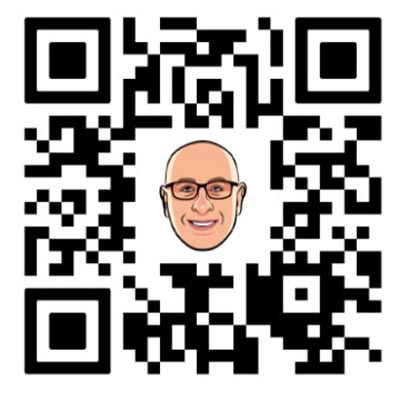
Scan this code and follow the instructions to see Joe Zeff come to life in front of you.
Rather than talk about AR, Zeff demonstrated it instead. He first scanned a QR code to launch a holographic twin (holotwin) of himself that he uses on all of his promotional materials, including bus posters. He then scanned a QR code on a poster for Advanced Robotics, allowing the poster to come to life. The woman on the poster (Advanced Construction Robotics CEO Danielle Proctor) began speaking: “Advanced Robotics is changing everything in the way we do business, whether it be in a manufacturing arm, cleaning your house, and in my case construction…” As she spoke, interactive elements appeared on the screen that would enable AR users to explore the topic further, all happening within the AR platform so that it can be tracked by the client.

Danielle Proctor, CEO for Advanced Construction Robotics, comes to life on a life-sized trade show poster.
For printers who might feel uncomfortable with AR, or concerned that digital channels are taking their business, Zeff offers a different perspective. “I'll tell you, before augmented reality, I had no idea which printers were out there,” he told the audience. “Now I know every printer in town. I need printers who can create waterproof posters that I can put on bus shelters. I need printers who can create six-foot tall standups. I need printers who can create placards for distribution around town.”
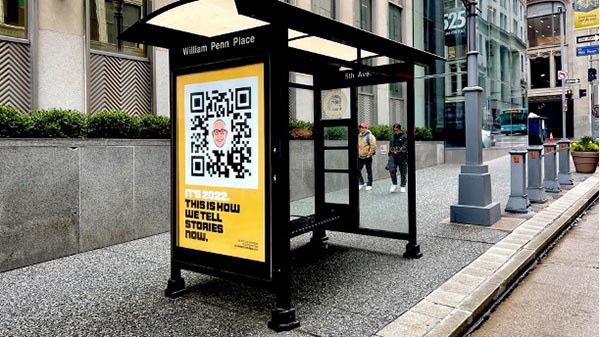
Self-promotional poster for Joe Zeff Design placed on a bus shelter in Pittsburgh, Pa.
Zeff allowed attendees to experience AR themselves by showing a QR code (available in the downloadable slide deck) that enabled them to experience an AR version of the Peregrine spacecraft headed to the moon later this year. “As you can see, I have the ability to view it from different angles,” he said. “I can go under it. I can make it smaller and view it on my desktop. (The holotwin automatically clings to a horizontal surface.) And this is something that has spawned tremendous opportunities.”
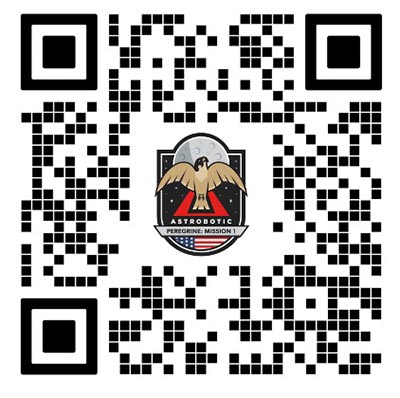
The 3D AR experience for the Peregrine lander was originally created for Time Magazine.
Zeff also showed an experience that allowed attendees to place a dinosaur in their environments and experience it walking directly toward them.
He explained the technology behind holotwins, which start as people or objects shot against a green screen. That person or object then appears in front of you through your cellphone. Videos can be substituted for people or objects, as well. “There's no shortage of ways that you can leverage this capability to market, to educate, and to entertain,” says Zeff. “It’s very powerful and getting increasingly accessible, not just from a consumption standpoint (where you don't need an app), but also from a creator's perspective. While there are certainly levels of engagement that require programming experience, there are also levels that allow you to create a simple experience through drag and drop.”
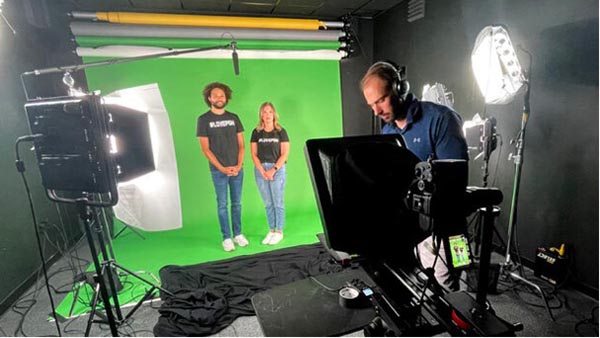
Holotwin scene being shot in front of a green screen. By scanning a QR code, these individuals will appear standing in front of the intended audience through their cellphone screens.
If they are thinking about getting involved in AR, Zeff took the opportunity in the Q&A to offer encouraged attendees to follow some best practices to get the best results:
- Optimize for the viewing environment.
Where will the audience be viewing the experience? (At home or in a loud, noisy stadium?) “If the environment is noisy, adjust the experience so that it is still valuable and enjoyable in that environment,” he said.
- Optimize the reticle.
If using a reticle to place the AR scene, ensure that it uses a color, shape, and size that can be seen in a cluttered environment. For example, an unusual, high-contrast color will stand out in the environment and the viewer will be able to easily identify it on their mobile screens.
- Keep the experiences less than 5–6 MB.
Use lower resolution video, less than 90 seconds in play time, to ensure that it will stream properly. Compress the video if necessary.
- For the QR code, use straight black rather than a four-color build.
If there are any registration issues on the printed piece (poster, direct mail piece, freestanding display), it can cause scanning issues.
- Watch people scan the code to identify and reduce friction points.
Every technology has a learning curve, and watching people use AR for the first time can be invaluable in eliminating the friction points.
While getting involved in AR might seem intimidating, Tolliver-Walker concluded, there are plenty of resources to help, including the speakers themselves, both from an outsourcing and consulting perspective.
Check out the full webinar here.



